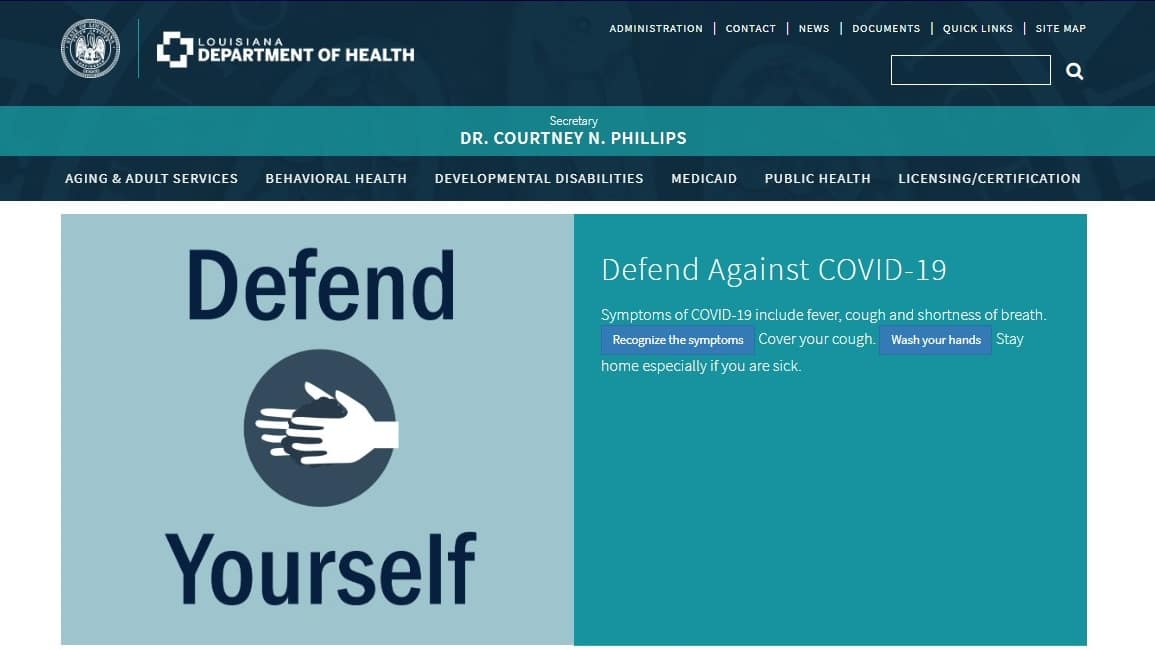By Will Hall, Baptist Message executive editor
ALEXANDRIA, La. (LBM) – Our state and our nation needs to pinpoint its COVID-19 mitigation efforts to focus laser-like on those vulnerable to its serious effects in order to end the crushing impact of this pandemic on our families, our economy, our education system and our future.
A few days ago, I signed a joint letter with other Louisiana Baptist leaders to commit to wearing a mask as a measure for fighting back against the surging disease and to ask other Louisiana Baptists to join us in this simple thing.
I truly believe in this initiative as part of the answer to prevent spreading COVID-19 to others. Research shows that wearing masks, socially distancing and sanitizing frequently are good general measures to make a difference in reducing the spread of this disease within the general population.
But, I am also convinced by the data from the Louisiana Department of Health that a more aggressive approach is needed to end the hospitalizations, ventilations and deaths in the state – which should be the primary concerns driving public policy in response to the pandemic (and not just the number of cases). In fact, I would argue that the number of cases is only relevant to this healthcare crisis with regard to how cases relate to any of these resulting serious health impacts.
There are some anecdotal instances of heart and brain injury associated with COVID-19 cases, but the evidence appears to indicate that these conditions are contained to the same vulnerable groups experiencing hospitalizations, ventilations and deaths.
Enormous files of information that have been gathered in the state and across the nation actually pinpoint those who are being harmed by the novel coronavirus. Indeed, using this information we have the ability to essentially allow the virus to burn itself out without further serious medical consequences to the populations of Louisiana and the United States.
In our state, almost half of all deaths resulting from COVID-19 have been suffered by nursing home residents(nationally, the number reached 42 percent at the end of June). Indeed, during the June spike in Louisiana cases, fueled by a huge increase in infections among young adults (18-29 years old), 75 percent of COVID-19 deaths were among nursing home residents, LDH data shows.
It is intolerable that 23,000 or so of 4.6 million Louisianans should suffer so disproportionately.
Furthermore, such an extreme skew in bearing the burden of the serious effects of the COVID-19 outbreak requires an extreme response – such as the declaration of a state of emergency for nursing homes and the isolation of them from all outside contact. This would require a number of inconveniences for those who provide care and services to patients in these types of facilities, but such sacrifices evidently are needed in order to solve half of the COVID-19 crisis in the state. It might even need the involvement of the National Guard.
Addressing the rest of the vulnerable population is not so easily accomplished, but I suspect doable with concentrated resources from the state and federal governments to aid families and individuals in isolating loved ones or themselves.
In Louisiana, the six factors contributing to the most hospitalizations, ventilations and deaths from COVID-19 include:
— age (those over 76 years of age have suffered half the deaths)
— hypertension / high blood pressure (60 percent of deaths)
— diabetes (36 percent of deaths)
— cardiac disease (21 percent of deaths)
— chronic kidney disease (20 percent of deaths)
— obesity (19 percent of deaths)
Nationally, according to the CDC, additional health risks leading to severe illness from COVID-19 are: COPD, weakened systems from organ transplants, sickle cell disease and Type 2 diabetes mellitus. Other factors that might put people at jeopardy are: moderate to severe asthma, cerebrovascular disease, cystic fibrosis, dementia, liver disease, pulmonary fibrosis, smoking, thalassemia and Type 1 diabetes mellitus. Meanwhile, the CDC also says, “Children who are medically complex, who have neurologic, genetic, metabolic conditions, or who have congenital heart disease are at higher risk for severe illness from COVID-19 than other children.”
Attacking the disease in such a pinpoint fashion (nursing homes, and, individuals with known underlying health risks) will not stop the spread of cases, but it will eliminate cases of serious medical consequences and mortality, allowing the virus to run its course among the not-at-risk-of-serious-illness population (likely as something akin to a seasonal flu or the common cold).
We are facing an extreme situation that threatens our very way of life; and, in that context, targeting the vulnerable among us with extraordinary measures of protection is a radical proposal worth considering.




